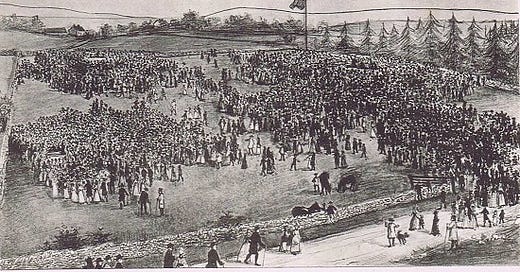221 Years Ago, Kentucky Had Another Revival
One Preacher Called That Revival An 'Ejaculation of Prayer'
It's been nearly impossible to escape the online chatter about what's been happening at Asbury University. What started as a regularly scheduled college chapel service on February 8 has turned into the chapel service that never ends. As I'm writing these words, that spiritual gathering is still going on. In fact, it's still growing, still evolving, stil…
Keep reading with a 7-day free trial
Subscribe to Orthodoxy of Me to keep reading this post and get 7 days of free access to the full post archives.





